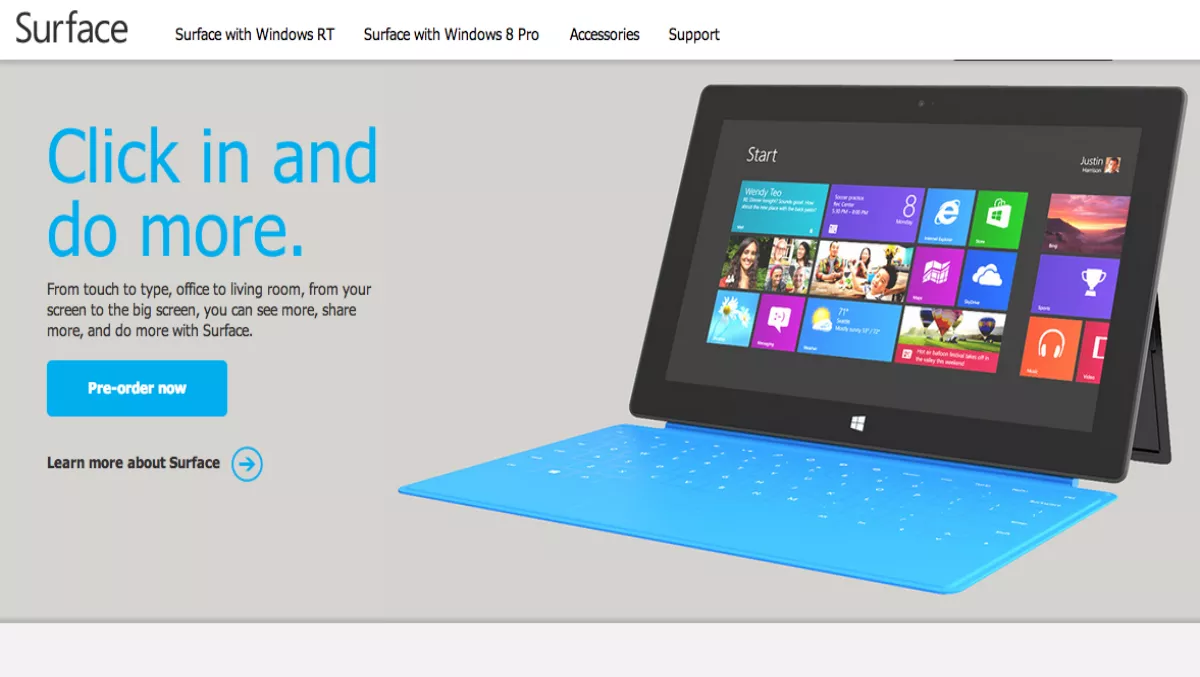
Once more unto the breach dear friends…HP tablet v2.0
Beleaguered HP has announced its return to tablet computing with a Windows 8, Intel Atom- powered device it calls the ElitePad 900.
Except, says Simon Molloy, HP Market Development Manager : Business Notebooks, Printing and Personal Systems, it isn’t a return to tablets at all, but rather the evolution of its existing Windows line of tablet computers which has a provenance stretching back over a decade.
“We’ve had tablets in market since 2002, based on Windows, so the new one does not target the same market as the iPad or Android tablets do,” Molloy explains.
Instead, he says the 10-1-inch ElitePad is intended for business customers and is an extension of HP’s enterprise product set. However, “We do hope it will appeal to consumers, too,” he adds.
Based on the ‘full’ version of Windows 8, the ElitePad nevertheless does look a lot like the Android and iPad tablets with which it does not compete.
It is powered by Intel’s ‘Clover Trail’ Atom processor, familiar to many from the brief hula hoop netbook craze of the mid-2000s. While the first generation of the Atom was much maligned, the new one is receiving good press as a pretty powerful low-power x86 part.
Tough territory
While a move into tablets is arguably a necessity, given that the PC market is under a very real threat from these devices, HP is moving into well-trodden territory.
Back when the ill-fated and short-lived HP TouchPad hit the market (with a girly open hand), HP CTO Shane Robison noted that the gadget "Was half a generation or a generation behind the iPad and so that wasn't going to drive volume."
Good thing, then, that the ElitePad 900 isn’t competing with the 3rd generation iPad, 6th generation iOS, or the slightly-more-difficult-to-approximate Android bloc, which is on version 4.1-odd of its operating system.
While agreeing that entering the market on the back of an untested operating system in Windows 8 is risky, Molloy is upbeat.
“It is a big bet for a lot of companies and for Microsoft itself,” he notes.
“As one of Microsoft’s biggest partners, it is a major focus for us, so across all devices it will be a critical factor going forward - though we do expect Windows 7 to remain the predominant operating system with demand for touch input gradually leading to 8.”
While scepticism is perhaps inevitable given the brevity of the TouchPad and the difficulty with which Microsoft makes generational changes (Vista, anyone? No, we didn’t think so), it’s not all doom and gloom.
The performance and useability of Windows Phone is surprisingly good; Molloy says the presence of this touch-driven interface in the market since 2010 has provided some opportunity towards tweaking the Metro interface.
Windows advantages (and Microsoft disadvantages)
More than that, he says the new ElitePad 900 should deliver advantages owing to its Windows underpinnings that should make things far easier for IT managers than integrating the Android and iPads (with which it doesn’t compete) into the enterprise.
“The implementation should be much less challenging with common mobility tools and a common back-end, including Active Directory and a host of other familiar services.”
There is one more elephant in the room, however, and that’s the Surface. For the first time, even big partners like HP will be competing with Microsoft, on a slightly skewed playing field too (Microsoft doesn’t pay itself license fees for the operating system).
“It is going to be a very competitive market; it is new to have Microsoft in this space,” concedes Molloy. “However, we work with it very closely and don’t see too many clashes there. The Surface is at a different level, especially the RT device…”
Molloy says tablets on Windows 8 are ‘certainly a big bet’.
“We do hope and expect that Windows 8 will be strong. Our customers are asking for a device like the ElitePad 900 and the forecasts are ambitious as we seek to target the commercial market - and expect some appeal to grow among consumers too.”
Key specs (click here for more):
• 2GB memory• 64GB SSD primary storage• 1,280 by 800 resolution (16:10) 10.1-inch screen• Dual band Wi-Fi• Optional 4G WWAN radio• Optional capacitive pen/stylus support.• Size: 0.36 by 7 by 10.28 inches (HWD) independent of the Smart Jackets• Weight: 680 grams• 1080p front and 8-megapixel rear cam• Accelerometer, GPS, voice transcription• Available early 2013

